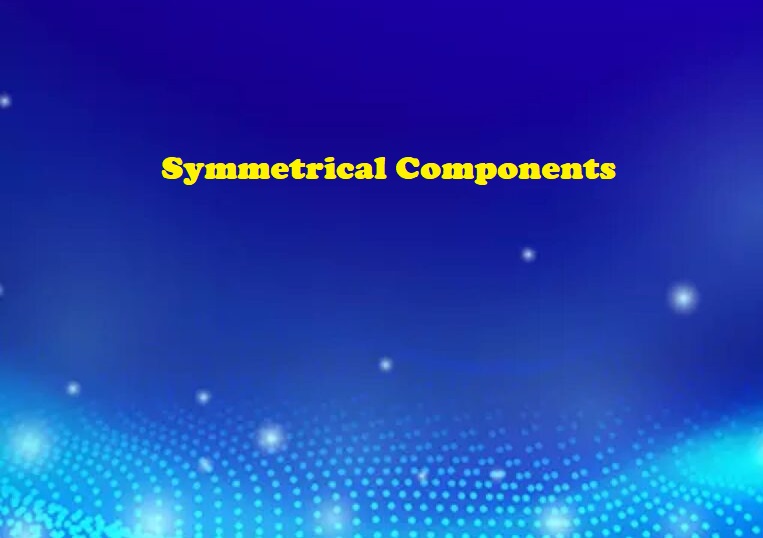The symmetrical component is a methodology that is applied to the Solution of Polyphase Networks.
Positive, Negative, and Zero Sequence Components
there are three sets of independent components in a three-phase system: positive, negative, and 0. zero is for both current and voltage. Positive sequence voltages (Fig. 1) are supplied by generators within the system and are always present. The second set of balanced phasors are also equal in magnitude and displaced 120 degrees apart, but display a counter-clockwise rotation sequence of A-C-B (Fig. 2), which represents a negative sequence. The final set of balanced phasors is equal in magnitude and phase to each other, however, since there is no rotation sequence (Fig. 3) this is known as a zero sequence.

The symmetrical components can be used to define any unbalanced current or voltage (Ia, Ib, Ic or Va, Vb, Vc which reference unbalanced line-to-neutral phasors) like:
Ia = I1 + I2 + I0 Va = V1 + V2 + V0
Ib = a2I1 + aI2 + I0 Vb = a2V1 + aV2 + V0
Ic = aI1 + a2I2 + I0 Vc = aV1 + a2V2 + V0
The sequence currents or voltages from a three-phase unbalanced set can be calculated by using this equations:
Zero Sequence Component:
I0 = ⅓ (Ia + Ib + Ic) V0 = ⅓ (Va + Vb + Vc)
Positive Sequence Component:
I1 = ⅓ (Ia + aIb + a2Ic) V1 = ⅓ (Va + aVb + a2Vc)
Negative Sequence Component:
I2 = ⅓ (Ia + a2Ib + aIc) V2 = ⅓ (Va + a2Vb + aVc)
The Independent symmetrical components and their resultant summation follow the superposition rules, which are the base of its practical usage in protective relaying. Before this procedure, we need a mathematical explanation of the “a” operator. With Fortescue’s formulas, the “a” operator shifts a vector by an angle of 120 degrees counter-clockwise, and the “a2” operator performs 240 degrees counter-clockwise phase shift. A balanced system will have only positive (Figure 4). the calculation of symmetrical components in a three-phase balanced or symmetrical system results in only positive sequence voltages, 3V1.

likewise, the currents also have equal magnitudes and phase angles of 120 degrees apart, which would produce a result of only positive sequence and no negative or zero sequence currents for a balanced system.
For unbalanced systems, such as the open phase there will be positive, negative, and maybe zero-sequence currents. Referring to the open-phase example (Fig. 5). the calculation of the symmetrical components results in positive, negative, and zero sequence currents of 3I1, 3I2, and 3I0. However, since the voltages are balanced in magnitude and phase angle, the result would be the same as the balanced system in Fig. 4, which proceeds only with positive sequence voltage. For a single phase to ground fault as shown in Figure 6, there will be positive, negative and zero sequence currents (3I1, 3I2, and 3I0) and voltages (3V1, 3V2, and 3V0).

In a no-fault condition, the power system is essentially symmetrical; therefore, only positive sequence currents and voltages exist. At the time of a fault, positive, negative, and possibly zero sequence currents and voltages exist. Using real-world phase voltages and currents with Fortescue’s formulas, all positive, negative, and zero sequence currents can be calculated. Protective relays use these sequence components along with phase current and/or voltage data as the input to protective elements.


